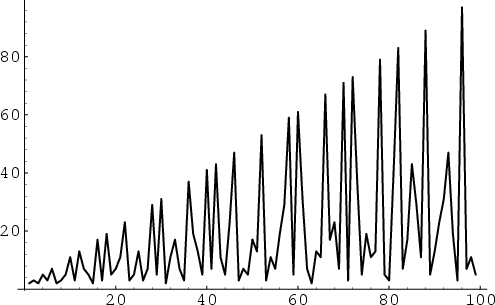|
|
|

For an Integer ![]() , let
, let
![]() denote the greatest prime factor of
denote the greatest prime factor of ![]() , i.e., the number
, i.e., the number ![]() in
the factorization
in
the factorization
See also Distinct Prime Factors, Factor, Least Common Multiple, Least Prime Factor, Mangoldt Function, Prime Factors, Twin Peaks
References
Erdös, P. and Pomerance, C. ``On the Largest Prime Factors of
Guy, R. K. ``The Largest Prime Factor of
Heath-Brown, D. R. ``The Largest Prime Factor of the Integers in an Interval.'' Sci. China Ser. A 39, 449-476, 1996.
Mahler, K. ``On the Greatest Prime Factor of
Sloane, N. J. A. Sequence
A006530/M0428
in ``An On-Line Version of the Encyclopedia of Integer Sequences.''
http://www.research.att.com/~njas/sequences/eisonline.html and Sloane, N. J. A. and Plouffe, S.
The Encyclopedia of Integer Sequences. San Diego: Academic Press, 1995.
![]() and
and ![]() .'' Aequationes Math. 17, 211-321, 1978.
.'' Aequationes Math. 17, 211-321, 1978.
![]() .'' §B46 in
Unsolved Problems in Number Theory, 2nd ed. New York: Springer-Verlag, pp. 101, 1994.
.'' §B46 in
Unsolved Problems in Number Theory, 2nd ed. New York: Springer-Verlag, pp. 101, 1994.
![]() .'' Nieuw Arch. Wiskunde 1, 113-122, 1953.
.'' Nieuw Arch. Wiskunde 1, 113-122, 1953.